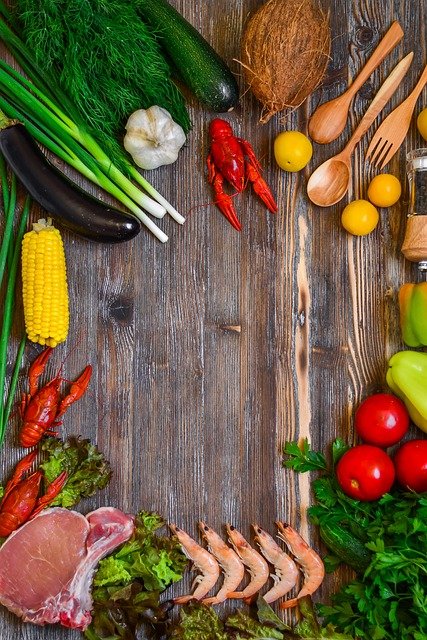Culinary Alchemy: Transforming Humble Ingredients into Gourmet Delights
Elevate your cooking game by mastering the art of transforming simple, everyday ingredients into extraordinary dishes. This culinary alchemy isn't just for professional chefs – with a little creativity and know-how, you can turn humble staples into gourmet masterpieces right in your own kitchen.

One of the most accessible examples of this is caramelization. Simply by applying heat to sugars in foods like onions or carrots, you can create deep, complex flavors that bear little resemblance to the original ingredient. This process turns sharp, pungent onions into sweet, mellow delights that can elevate everything from soups to sandwiches.
Another powerful transformation technique is fermentation. While often associated with complex processes, simple fermentation can be done at home to create unique flavors. For instance, allowing chopped cabbage to ferment with salt creates tangy, probiotic-rich sauerkraut – a far cry from its humble beginnings.
Unlocking Flavor Through Texture
Texture plays a crucial role in how we perceive flavor, and manipulating texture is a key aspect of culinary alchemy. Consider the potato – a staple found in kitchens worldwide. When mashed, it becomes a comforting side dish. But what happens when you push it further?
By dehydrating thin slices of potato and then frying them, you create delicate potato crisps with an intense flavor concentration. Or, by twice-cooking chunks of potato – first boiling, then roasting – you can create a contrast between a fluffy interior and a crispy exterior that elevates the humble spud to new heights.
This principle applies to many ingredients. Roasting vegetables concentrates their flavors and adds caramelized notes. Pureeing cooked vegetables can transform them into silky soups or sauces. Even fruits can be transformed – grilling peaches intensifies their sweetness and adds a smoky complexity.
The Alchemy of Combining Flavors
Sometimes, the magic happens when you combine seemingly disparate ingredients. This is where your creativity can really shine. Consider the classic combination of strawberries and balsamic vinegar. On paper, it sounds strange – fruit and vinegar? But the acidity of the balsamic actually enhances the sweetness of the strawberries, creating a sophisticated flavor profile.
Similarly, adding a pinch of salt to sweet dishes can heighten their flavor. A sprinkle of sea salt on top of a rich chocolate brownie creates a fascinating interplay of flavors that dance on your tongue. Even adding herbs to unexpected places can create magic – try adding basil to strawberry ice cream for a surprisingly delightful twist.
This principle of unexpected combinations can be applied to savory dishes as well. Adding a touch of coffee to beef stews deepens the flavor without tasting like coffee. A dash of fish sauce in non-Asian dishes can add a subtle umami boost that’s hard to identify but impossible to ignore.
Transformative Cooking Techniques
Certain cooking techniques have the power to completely transform ingredients. Sous vide cooking, for instance, allows for precise temperature control that can turn tough cuts of meat into tender, juicy delights. By cooking at low temperatures for extended periods, proteins break down slowly, resulting in meat that’s perfectly cooked edge to edge.
Smoking is another technique that can dramatically alter the character of an ingredient. While often associated with meat, try smoking vegetables like eggplant or tomatoes. The result is a deep, complex flavor that can add a new dimension to familiar dishes.
Even simple techniques like braising can work wonders. Tough, sinewy cuts of meat become fall-apart tender when cooked low and slow in flavorful liquid. The same technique can transform fibrous vegetables like fennel or celery into soft, luxurious side dishes.
The Art of Presentation
The final step in culinary alchemy is presentation. How a dish is plated can dramatically affect how it’s perceived and enjoyed. This doesn’t mean you need to create elaborate, cheffy presentations – sometimes, simplicity is key.
Consider how color can impact a dish. A sprinkle of vibrantly green herbs over a pale pasta dish instantly makes it more appealing. Or how texture can be used to create visual interest – a smooth puree can be topped with crunchy elements for contrast.
Even the choice of serving vessel can transform a dish. Serving a simple soup in a hollowed-out vegetable turns it into an impressive starter. Or presenting a familiar dessert in an unexpected form – like deconstructed apple pie components arranged artfully on a plate – can make diners see it in a whole new light.
Useful Tips for Culinary Alchemy
-
Experiment with different cooking methods for the same ingredient to discover new flavors and textures.
-
Don’t be afraid to combine sweet and savory flavors – some of the most interesting dishes play with this balance.
-
Learn the science behind cooking techniques to understand how and why ingredients transform.
-
Invest in a few key pieces of equipment like a good thermometer and a sharp knife to help you achieve consistent results.
-
Practice mindful tasting – really pay attention to flavors, textures, and how they interact.
-
Keep a culinary journal to record your experiments and discoveries.
-
Challenge yourself to create new dishes using only what’s already in your pantry.
Culinary alchemy is as much about mindset as it is about technique. By approaching cooking with curiosity and a willingness to experiment, you can unlock new dimensions of flavor in even the most familiar ingredients. So the next time you’re in the kitchen, look at your ingredients with fresh eyes – you might just create some magic.





